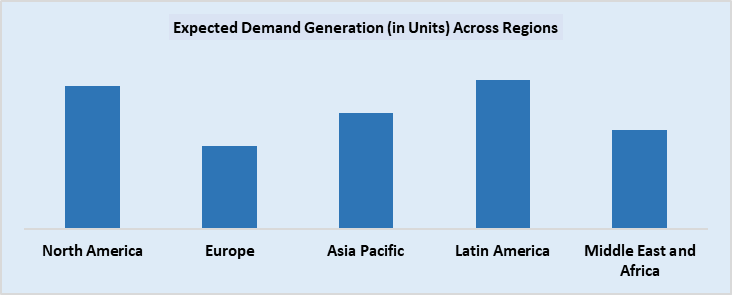Get Free Consultation
Global Smart Air Purifier market is expected to grow 2.42 X over the forecast period and offering $ opportunity value of around USD XX million from 2023-2036.
Global Market Size, Forecast, and Trend Over Analysis Period 2023 - 2036
| Base Year | 2023 |
| Forecast Year | 2024-2036 |
| CAGR | 18.70% |
| Base Year Market Size (2023) | USD 6,721.8 Million, Volume (K Units) |
| Forecast Year Market Size (2036) | USD XX Million, Volume (K Units) |
A smart air purifier is a air purification device that integrate with advanced smart technology, empowering users to monitor and control the air purification process through digital interfaces such as mobile apps or voice commands. These devices usually integrated with sensors, connectivity features, and advanced filtration technologies to enhance their functionality. Smart air purifiers very often equipped with built-in air quality sensors that continuously monitor the indoor air quality. These sensors functions is to identify various pollutants such as dust, pollen, smoke, and VOCs (Volatile Organic Compounds).
The demand for smart air purifiers has been on the rise, driven by various factors that emphasize the importance of clean and healthy indoor air. Growing developmental activities, technological advancements, surging awareness regarding air purification are among the factors translating into higher demand for smart air purifier. Bad air is causing several problems in children geriatric populations proliferating into number of respiratory disorders. Especially smoking, dust particle emissions, vehicle production are factors making air remain polluted, demand for such product arises due to numerous other factors in the market.
Post COVID-19 pandemic borne infections at the peak around the globe. Having pure air is became very crucial for keeping ourselves protected with unwanted health injections. Respiratory infection generally caused by bad air quality. Global bodies including WHO, IHME and other have created matrix for differentiating clean air from bad air. Air quality index is one of them, which is typically deployed n the metro cities. Growing urbanization, vehicle demand around, construction activities around the globe reducing the quality of air and resulting to sever health problem.
Meta-analysis highlighted, the growing cases of respirator infection, lung cancer cases. Such market dynamics are expanding the development of advanced solution for purifying air. Since technology is leaping big change in every sector, where the demand for smart tool is growing substantially. People became use to get every solution in digital format. Digitals interface is very easy to navigate by consumers, in order to get air quality management.



Report insights would help in navigating the market opportunities and strategize the key investment area.
The price range of smart air purifiers varies depending on technology used, generation, features, company brand among others.
Market Enablers Explored in the Report:
Market Restraints Explored in the Report:
Our in-depth analysis of the global Smart Air Purifier market includes the following segments:
| Global Smart Air Purifier Market | |||
| Base Year: | 2023 | Forecast Period: | 2024-2036 |
| Historical Data: | 2020 to 2022 | Market Size in 2023: | USD 6,721.8 Million |
| Forecast Period 2024-36 CAGR: | 18.70% | Market Size in 2036: | USD XX Million |
| Segments Covered: | By Type |
| |
| By Technology |
| ||
| By End User |
| ||
| By Distribution Channel |
| ||
| By Region |
| ||
| Key Market Drivers: |
| ||
| Key Market Restraints: |
| ||
| Key Trends: |
| ||
| Companies Covered in the Report: |
| ||

Above players have been profiled in the report. Report has investigated the players are various levels. Provided market share analysis at geography level and their product uptake in the market. Key strategic initiative taken by players in order to have bigger chunk of market. Detailed portfolio mapping is the key aspect of the market to better position in the market.